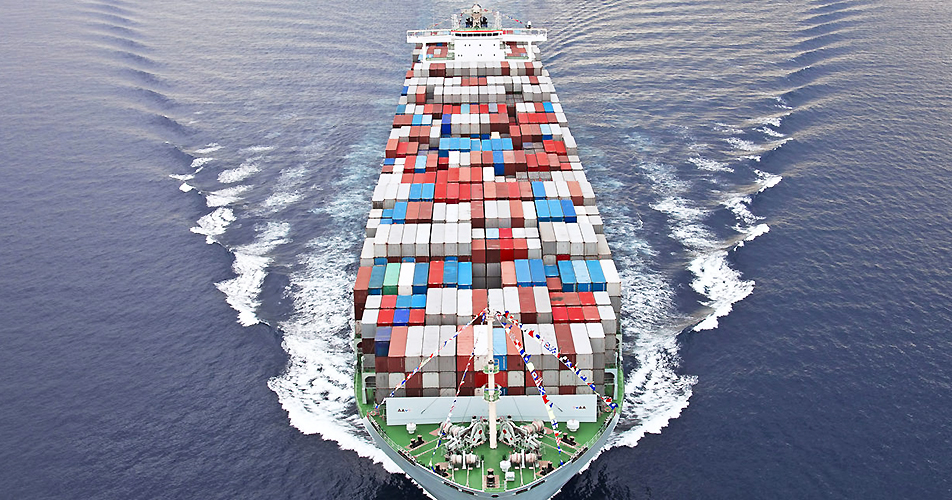Before the latest tariff announcement made its way to Main Street, the National Retail Federation (NRF) forecasted that the imposition of sweeping tariffs on all U.S. trading partners would profoundly impact import cargo at the nation’s major container ports.
The latest Global Port Tracker report released on April 9 by the NRF and Hackett Associates suggests cargo traffic will drop dramatically beginning next month; however, that outlook might change given the changes in the tariff picture.
“Retailers have been bringing merchandise into the country for months in attempts to mitigate against rising tariffs, but that opportunity has come to an end with the imposition of the ‘reciprocal’ tariffs,” said NRF Vice President for Supply Chain and Customs Policy Jonathan Gold. “Tariffs are taxes on U.S importers ultimately paid by consumers. They are creating anxiety and uncertainty for American businesses and families alike with the speed at which they are being implemented and stacked upon each other. At this point, retailers are expected to pull back and rely on built-up inventories, at least long enough to see what will happen next.”
Following U.S. tariffs on China, Canada and Mexico announced earlier this year, President Donald Trump set a minimum tariff of 10 percent on all U.S. trading partners and “reciprocal” tariffs as high as 50 percent last week on dozens of nations, the NRF noted in a media release. This week, as China reacted with its tariff hike for U.S. imports, the Trump Administration paused the increased tariffs for countries working to negotiate a broader trade deal with the U.S. (see bottom of this article for a link to broader tariff coverage).
“China has since announced tariffs on U.S. goods, prompting Trump to announce additional tariffs on China, bringing the base rate to 104 percent just for the national emergency tariffs. The rate goes even higher when the base tariff rate and earlier Section 301 tariffs are added in,” NRF said. Still, the U.S. moved on April 9, pushing the tariff rate on China up to 125 percent.
Under the circumstances before April 9, imports during the second half of 2025 were expected to be down at least 20 percent year-over-year. Even balanced against elevated levels earlier this year, that could bring total 2025 cargo volume to a net decline of 15 percent or more unless the situation changes.
“In this environment of complete uncertainty, our forecast for import cargo will be subject to significant adjustments over the coming months,” Hackett said before the Trump pivot. “At present, we expect to see imports begin to decline by May and that they will drop dramatically during the remainder of the year.”
U.S. ports covered by Global Port Tracker handled 2.06 million Twenty-Foot Equivalent Units, one 20-foot container or its equivalent, in February, although the Ports of New York and New Jersey have yet to report final data. That was down 7.5 percent from January but up 5.2 percent year-over-year. It was the busiest February in three years, even though the month is traditionally the slowest of the year because of China’s Lunar New Year factory shutdowns.
U.S. Ports have not yet reported numbers for March, but Global Port Tracker projected the month at 2.14 million TEU, up 11.1 percent year-over-year. April, which includes cargo shipped before President Trump announced the new tariffs, is forecast at 2.08 million TEU, up 3.1 percent year-over-year. But May is expected to end 19 consecutive months of year-over-year growth, dropping sharply to 1.66 million TEU, down 20.5 percent from the same period last year. June is forecast at 1.57 million TEU, the lowest volume since February 2023 and a 26.6 percent drop year-over-year. July is forecast at 1.69 million TEU, down 27 percent year-over-year and August at 1.7 million TEU, down 26.8 percent.
Before the President announced the U.S. round of tariffs on April 9, April was forecast at 2.13 million TEU, up 5.7 percent year-over-year; May at 2.14 million TEU, up 2.8 percent; June at 2.07 million TEU, down 3.2 percent, and July at 1.99 million TEU, down 13.9 percent. The current forecast would bring the first half of 2025 to 11.73 million TEU, down 2.9 percent year-over-year rather than the total of 12.78 million TEU, up 5.7 percent year-over-year, forecasted before the tariff announcement.
Imports have been elevated since last summer as retailers brought in cargo ahead of an October strike at East Coast and Gulf Coast ports and in anticipation of an escalation of tariffs after the November elections.
Imports in 2024 totaled 25.5 million TEU, up 14.7 percent from 2023 and the highest since 2021’s record 25.8 million TEU during the pandemic.
Global Port Tracker, produced for the NRF by Hackett Associates, provides historical data and forecasts for the U.S. ports of Los Angeles/Long Beach, Oakland, Seattle and Tacoma on the West Coast; New York/New Jersey, Port of Virginia, Charleston, Savannah, Port Everglades, Miami and Jacksonville on the East Coast, and Houston on the Gulf Coast.
See below for additional SGB Media coverage of the tariff issues and negotiations.
***
EXEC: Trump Admin Hits “Pause” on Most Higher Tariffs; Bumps China to 125 Percent
EXEC: Trump Threatens to Push China Tariffs to 104 Percent Total
EXEC: Trump Tariffs Hit Active Lifestyle Stocks Hard; Vietnam Hit a Big Surprise















